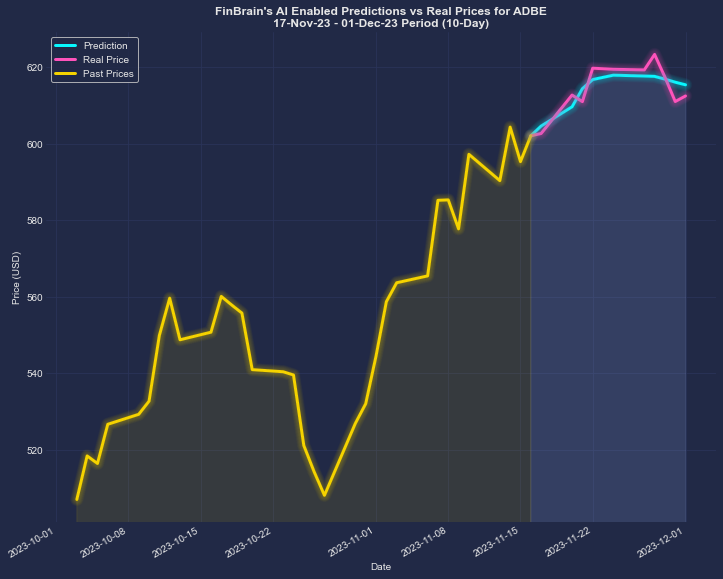20 Excellent Reasons For Choosing AI Stock {Investing|Trading|Prediction|Analysis) Sites
20 Excellent Reasons For Choosing AI Stock {Investing|Trading|Prediction|Analysis) Sites
Blog Article
Top 10 Suggestions For Evaluating Ai And Machine Learning Models Used By Ai Stock Predicting/Analyzing Trading Platforms
It is important to assess the AI and Machine Learning (ML) models utilized by stock and trading prediction platforms. This will ensure that they provide precise, reliable and useful insights. Models that are poorly constructed or overhyped could lead to inaccurate predictions and financial loss. Here are 10 tips to evaluate the AI/ML capabilities of these platforms.
1. Understanding the model's purpose and method of operation
Clarity of purpose: Determine if this model is intended for trading in the short term or long-term investment and sentiment analysis, risk management and more.
Algorithm disclosure: Determine whether the platform has disclosed which algorithms it is using (e.g. neural networks or reinforcement learning).
Customizability - Determine if you can tailor the model to meet your trading strategy and risk tolerance.
2. Perform model performance measures
Accuracy: Verify the model's accuracy in predicting future events. However, don't solely rely on this metric since it can be misleading when used in conjunction with financial markets.
Precision and recall. Examine whether the model accurately predicts price fluctuations and minimizes false positives.
Risk-adjusted return: Determine whether the model's forecasts will yield profitable trades after accounting for risks (e.g. Sharpe ratio, Sortino coefficient).
3. Check the model with backtesting
History of performance: The model is tested using historical data in order to determine its performance under the previous market conditions.
Tests with data that were not used for training To prevent overfitting, try testing the model using data that was never previously used.
Scenario analysis: Assess the model's performance under different market conditions.
4. Be sure to check for any overfitting
Overfitting Signs: Search for models that do exceptionally well when trained but poorly with data that is not trained.
Regularization Techniques: Examine to see if your platform uses techniques like dropout or L1/L2 regularization to prevent overfitting.
Cross-validation - Ensure that the platform utilizes cross-validation in order to evaluate the generalizability of the model.
5. Examine Feature Engineering
Relevant Features: Check to see whether the model includes relevant characteristics. (e.g. volume prices, technical indicators, price and sentiment data).
Choose features carefully: The platform should only contain statistically significant information and not irrelevant or redundant ones.
Updates to features that are dynamic: Check to see how the model adapts itself to new features, or market changes.
6. Evaluate Model Explainability
Interpretability: Make sure the model provides clear reasons for its predictions (e.g. SHAP value, importance of features).
Black-box platforms: Be careful of platforms that use excessively complex models (e.g. neural networks that are deep) without explanation tools.
User-friendly insights: Make sure that the platform provides actionable insights in a form that traders are able to comprehend and utilize.
7. Examine the Model Adaptability
Market shifts: Determine whether your model is able to adjust to market shifts (e.g. new laws, economic shifts or black-swan events).
Continuous learning: Make sure that the platform updates the model often with fresh data to improve performance.
Feedback loops: Make sure the platform is incorporating feedback from users or real-world results to help refine the model.
8. Be sure to look for Bias or Fairness
Data bias: Verify that the data on training are representative of the market and free of bias (e.g. overrepresentation in certain time periods or sectors).
Model bias: Determine whether the platform monitors and mitigates biases in the model's predictions.
Fairness: Ensure that the model does not disproportionately favor or disadvantage certain sectors, stocks or trading styles.
9. Evaluation of Computational Efficiency
Speed: Determine whether you can predict by using the model in real time.
Scalability: Check whether the platform has the capacity to handle large datasets with multiple users, and without any performance loss.
Resource usage: Check whether the model makes use of computational resources efficiently.
Review Transparency and Accountability
Model documentation: Ensure that the platform provides detailed documentation about the model's structure as well as its training process, as well as limitations.
Third-party validation: Find out whether the model has been independently verified or audited by a third party.
Error handling: Check whether the platform is equipped to detect and rectify mistakes or errors in the model.
Bonus Tips
Case studies and reviews of users: Research user feedback and case studies to evaluate the model's performance in real life.
Trial period: Test the software for free to see how accurate it is as well as how simple it is use.
Customer Support: Verify that the platform offers solid technical or model-related assistance.
The following tips can help you assess the AI models and ML models on platforms for stock prediction. You'll be able to assess if they are transparent and reliable. They must also be aligned with your goals for trading. Take a look at the top best ai stock trading bot free for website info including best stock advisor, trader ai review, ai for investing, ai trade, trader ai app, investment ai, ai investment app, ai stock, best ai trading app, ai stock prediction and more.
Top 10 Tips To Evaluate The Educational Resources Of Ai Stock Predicting/Analysing Trading Platforms
Reviewing the educational tools offered by AI-driven stock prediction and trading platforms is crucial for those who use them to learn how to make the most of the platform, interpret results, and make educated trading decision. Here are the top 10 tips to evaluate the quality and usefulness of these sources:
1. Comprehensive Tutorials, Guides and Instructions
TIP: Find out if the platform offers instructions or user guides for beginners as well as advanced users.
Why is that clear instructions can help users use the platform.
2. Video Demos as well as Webinars
Watch video demonstrations as well as webinars, live training sessions.
Why? Interactive and visually appealing content can help you comprehend complicated concepts.
3. Glossary
Tips: Ensure that the platform has an alphabetical list of AI and financial terminology.
The reason: This will help all users, but especially novices to the platform be able to comprehend the terminology.
4. Case Studies and Real-World Examples
TIP: Determine whether the platform offers cases studies or examples of how AI models have been applied in real-world situations.
The reason: Examples of practical use demonstrate the platform's effectiveness and help users to understand its applications.
5. Interactive Learning Tools
TIP: Find interactive tools such as games, simulators or sandboxes.
Why? Interactive tools allows users to try and practice their skills without risking any money.
6. Content that is regularly updated
Check if educational materials are updated regularly to keep up with market trends, new features or regulatory changes.
The reason: outdated information can result in confusion and use incorrectly.
7. Community Forums with Support
Look for active community forums and support groups where you can ask questions to other users and share your insights.
What's the reason? Expert and peer guidance can help students learn and resolve problems.
8. Programs that provide accreditation or certification
Check whether the platform has certification programs and accredited courses.
What is the reason? Recognition of learners' learning can encourage them to study more.
9. User-friendliness and accessibility
Tips: Assess the accessibility and usefulness of educational materials (e.g., mobile friendly and downloadable pdfs).
The reason: Access to the internet is easy and ensures that learners can study at their own speed and at their own convenience.
10. Feedback Mechanism for Educational Content
Tip: Verify if the platform allows users to leave feedback on educational materials.
The reason: Feedback from users can help improve the value and quality of the materials.
Different learning formats are offered.
The platform should offer an array of learning options (e.g. video, audio and texts) to meet the requirements of a variety of learners.
By carefully evaluating these features, you can determine if you have access to a variety of education resources that will assist you in making the most of it. See the recommended inciteai.com AI stock app for blog tips including incite, incite, ai stock, ai trading, ai trading tools, ai investment platform, chart ai trading, ai invest, trader ai review, chart ai for trading and more.